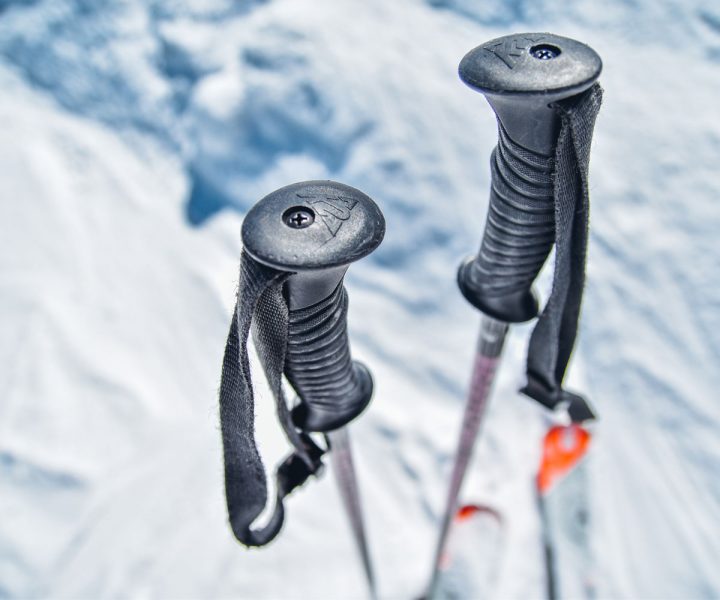
For the weekend warrior, ski poles are a piece of equipment that are often given little thought. The truth is, though, that they can transform your skiing style and aid your performance rather than simply being an annoying extra. Once chosen correctly, ski poles are crucial to improving your balance, stability, turning, and style.
Aside from the construction and materials, a ski pole that is too long with force you to ski more on your heels and with less control. Conversely, ski poles that are too short will have the opposite effect, making you lean forward more. However, they can also give you more control which is often useful for freestyle skiers. For beginners, the most important thing is to choose the right size of pole and for more advanced skiers, material and construction start to become more important.
Choosing the correct size
As a basic rule, to fit ski poles correctly you should hold the poles upside down and grab them just underneath the basket. With the grip of the poles touching the ground, your elbows should rest at around a 90-degree angle. Make sure you’re wearing shoes or ski boots when doing this so that you’re standing at an accurate height. Ski poles usually vary in 2-inch increments. If you find that you’re in between sizes then you should opt for the slightly shorter pole.
The shaft
The shaft of a ski pole is typically either made of aluminium or a composite material. Composite shafts are usually lighter and narrower with more flex which means that it will be better at withstanding crashes and impacts. Aluminium shafts have different ratings which indicate their strength to weight ratio.
The basket
If you are usually skiing off-piste in softer snow then you should opt for a wider basket so that it doesn’t sink into the snow as much. Park and piste skiers should normally go with a narrower basket because they are lighter and more manoeuvrable. Some ski poles do come with interchangeable baskets so that you can adapt to your requirements.
The strap
The majority of poles will use a nylon wrist strap which helps to keep the poles in place in case you lose grip. More advanced and higher-end poles will use padded straps with possibly a Velcro locking system which auto-releases to prevent injury during falls.
 Your Privacy Choices
Your Privacy Choices
 The
The